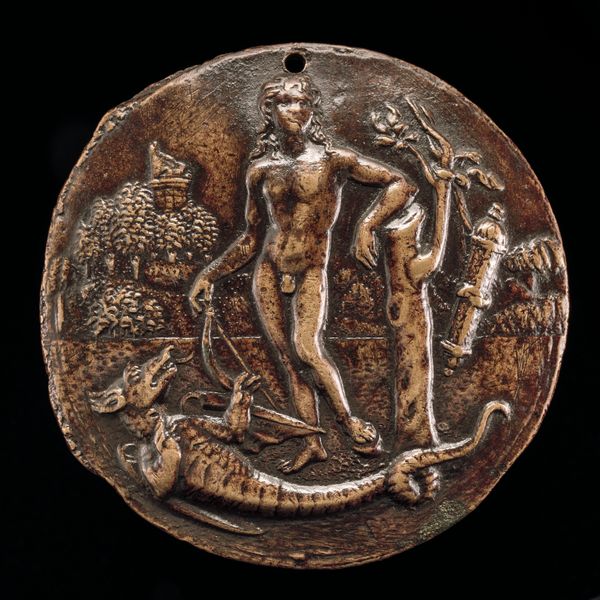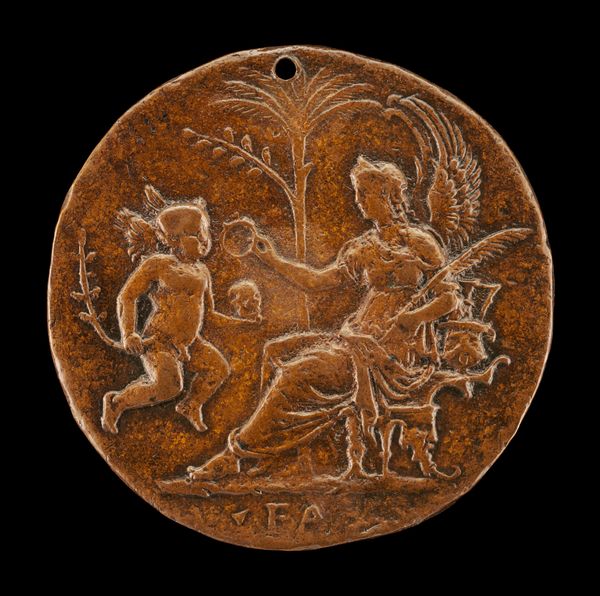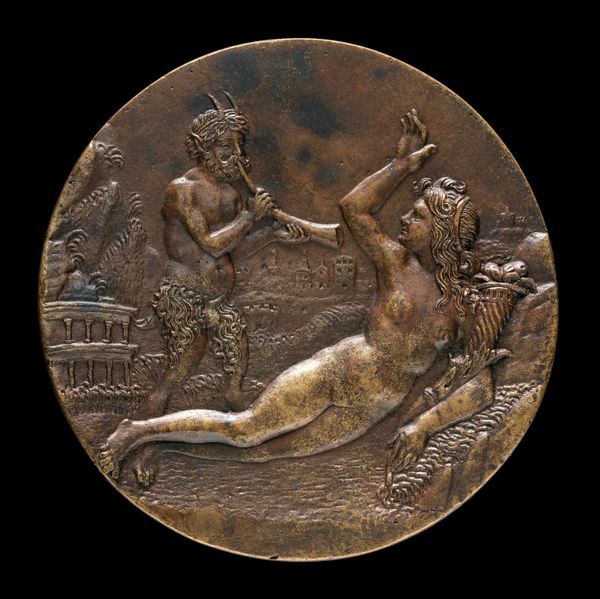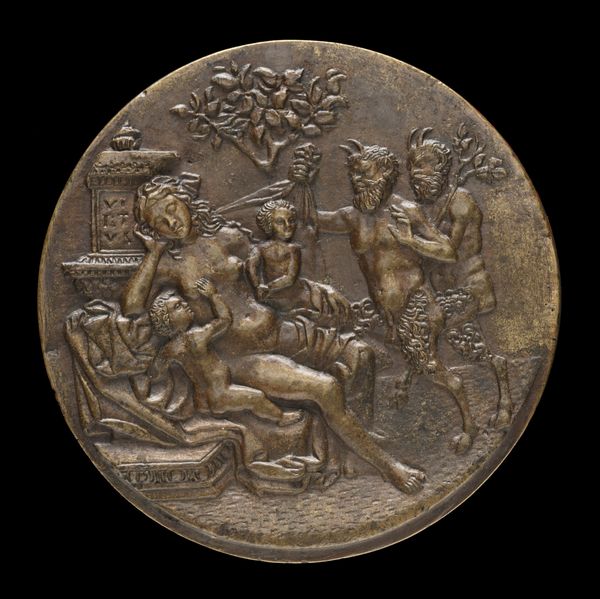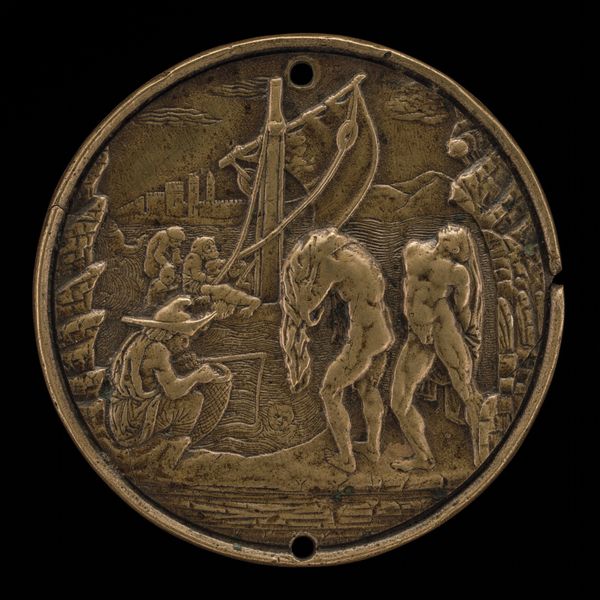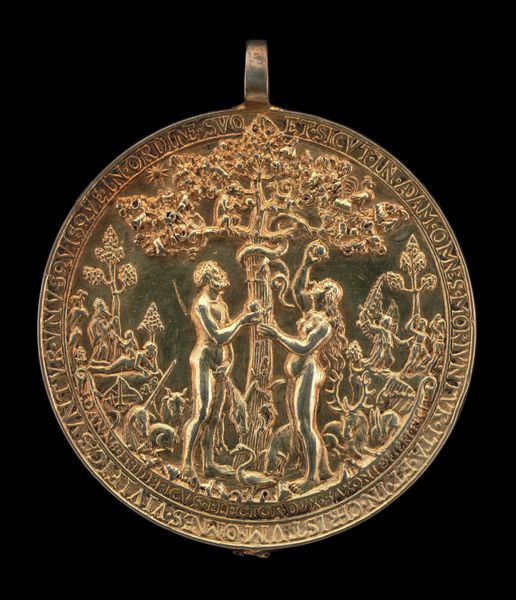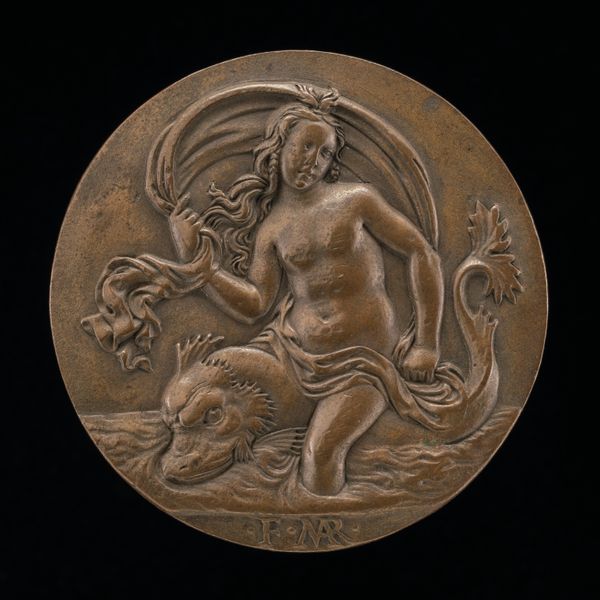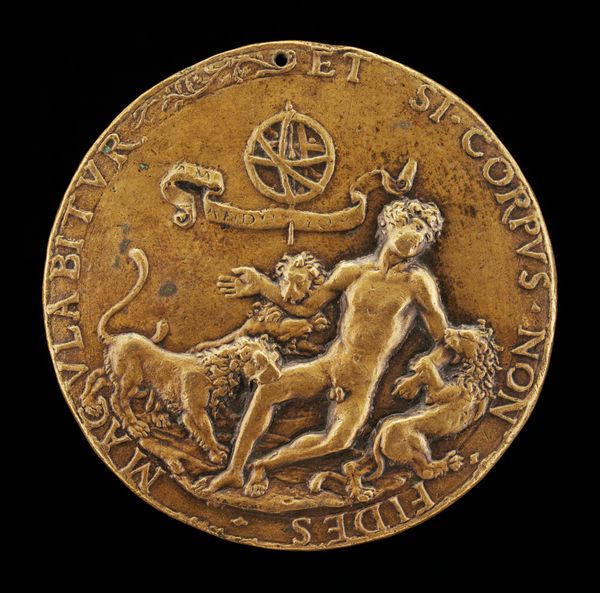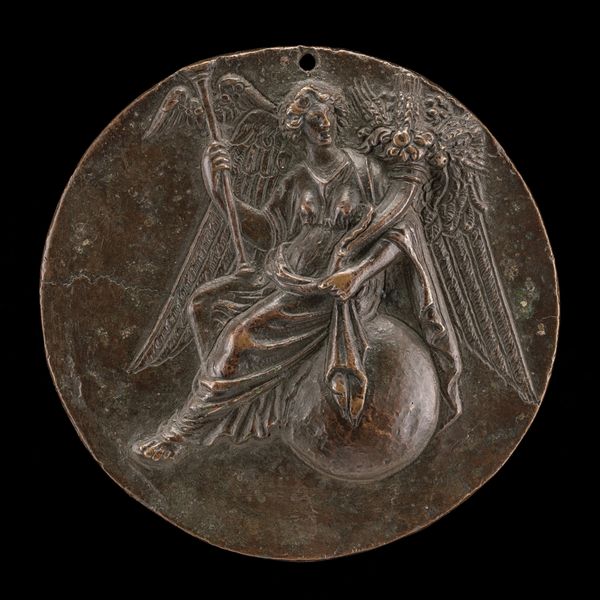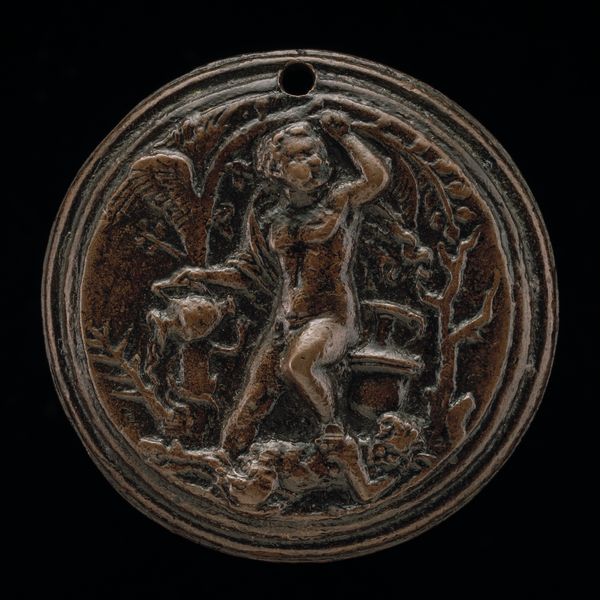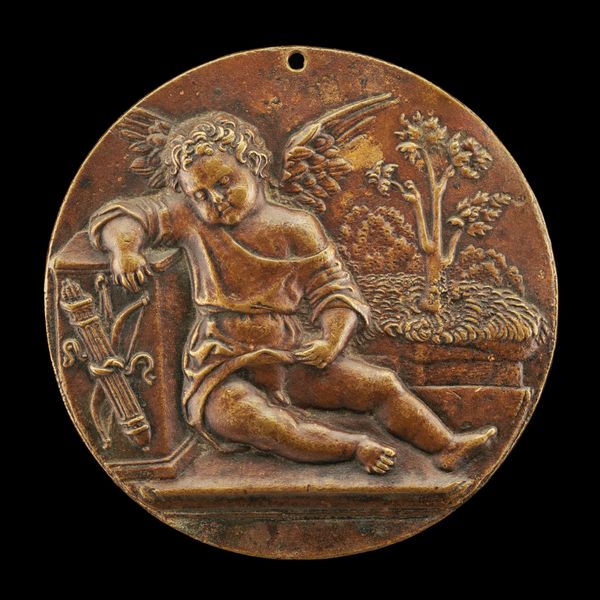
Jason (or Apollo) and the Dragon c. early 16th century
0:00
0:00
relief, bronze, sculpture
#
stone
#
sculpture
#
relief
#
landscape
#
bronze
#
figuration
#
sculpture
#
history-painting
#
italian-renaissance
#
statue
Dimensions: overall (diameter): 6.6 cm (2 5/8 in.) gross weight: 51 gr
Copyright: National Gallery of Art: CC0 1.0
Pseudo Antonio da Brescia produced this bronze medal of Jason (or Apollo) and the Dragon, in Italy, sometime in the late 15th or early 16th century. The imagery here speaks to the Renaissance fascination with classical antiquity. The heroic male nude and the themes of mythology would have resonated with the educated elite who collected such objects. The medal operates as a kind of portable emblem of humanist values, showcasing the patron's learning and refined taste. This was a period when Italian city-states were centers of artistic production, fueled by wealth from trade and banking. Institutions like the Medici court in Florence played a crucial role, commissioning art and shaping cultural trends. This medal reflects the self-conscious classicism of the era and it subtly affirmed the patron's place within that cultural milieu. To understand it better, we can look at inventories of collections, letters between artists and patrons, and the theoretical writings of the time. Art history is about piecing together these social and institutional contexts to illuminate the meanings that works of art held, and still hold, for us today.
Comments
No comments
Be the first to comment and join the conversation on the ultimate creative platform.
